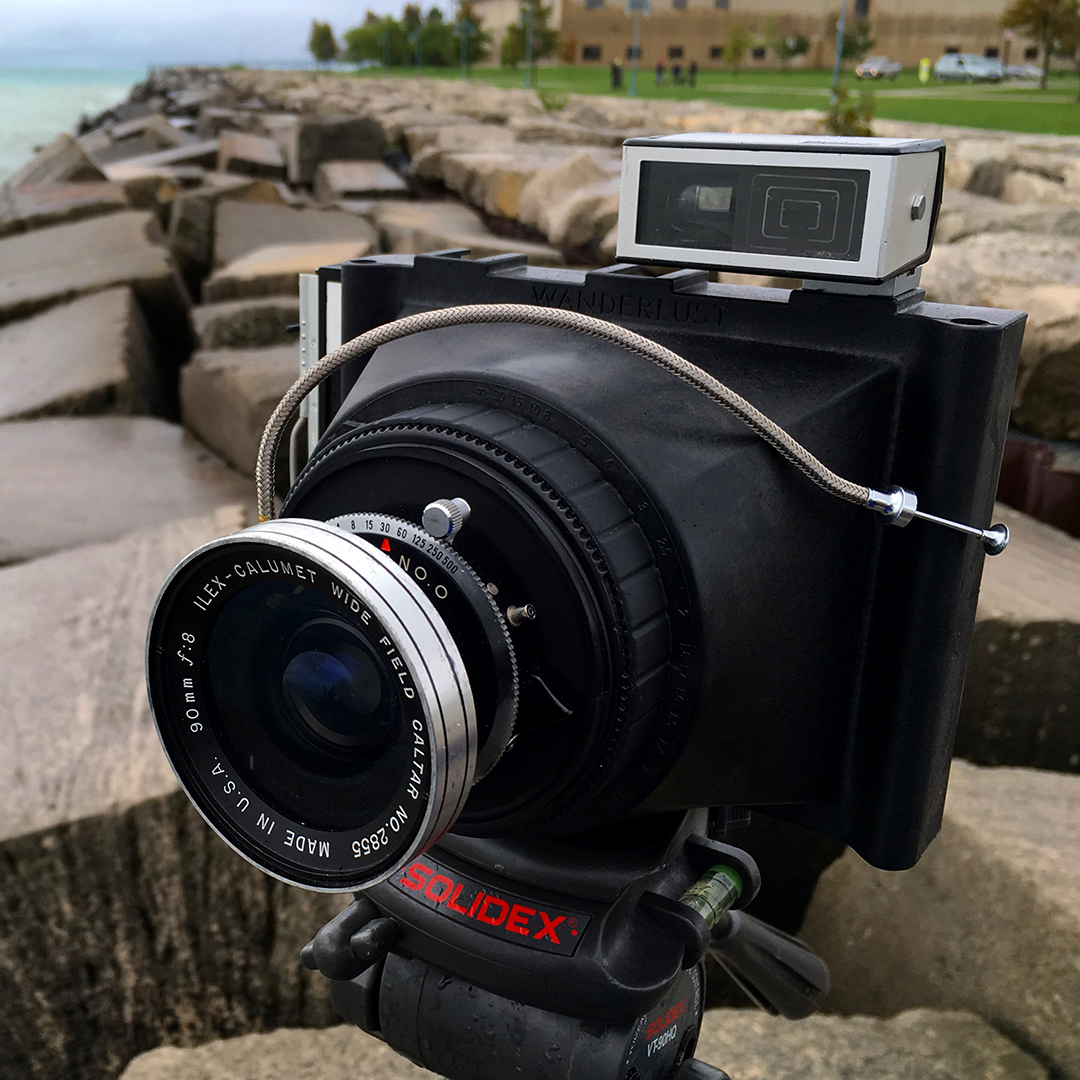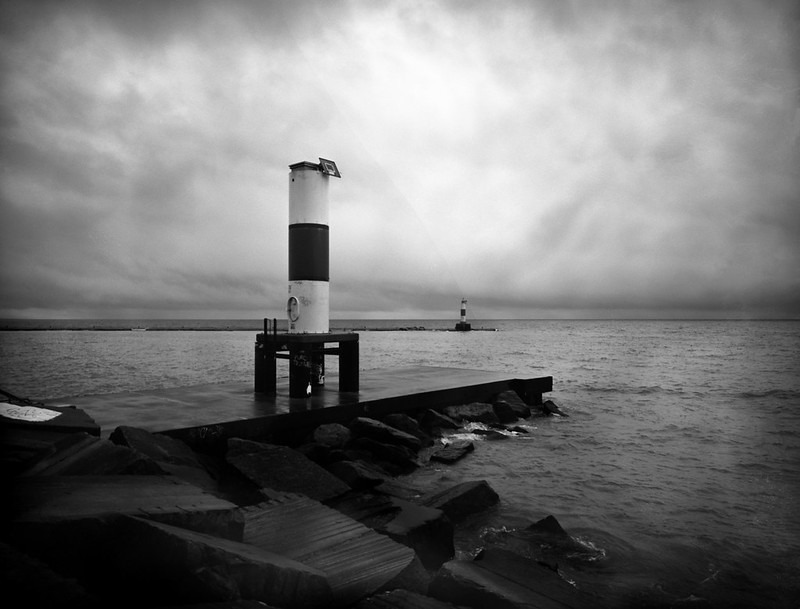
In college I was required to shoot black and white 4×5 film as part of a photography class for my Cinema and Video Production degree. Back then I wanted nothing to do with photography–I was a movie maker gosh darn it!–and I did as little as I possibly could to scrape by. I was so uninterested in film photography that I threw away my negatives and prints after I graduated! Fast forward almost a decade and I’m now a film photography junkie. I collect and shoot with every retro camera I can get my hands on and I’ve shot almost every format, from 110, instant and medium format to Super8 and 16mm motion picture film. The one format I haven’t shot on since college though is large format 4×5 film. I could kick myself now, remembering the amazing large format cameras and darkroom gear I had access to back then. These days I don’t have space for a darkroom or the cash to buy an expensive large format camera, but I did finally find a way to shoot 4×5.
A couple years ago I kickstarted a 4×5 camera called the Travelwide 4×5. The company that designed it had a lot of issues with production and the camera was delayed for years. By the time I finally received it in the mail I had given up on trying to collect all the extra parts I needed to make it work, and so the camera gathered dust in a corner of my room. That is, until a month, when I found a large format lens at the bottom of a drawer at work–an Ilex-Calumet Field Caltar 90mm f/8 to be precise. After a little research online I came to find out that the lens was compatible with the Travelwide. My work lets me borrow gear, so I was suddenly closer than ever to having a functioning 4×5 camera. I ordered a couple used 4×5 film holders and New55’s Atomic-X ISO 100 4×5 Panchromatic Sheet Film online and I was ready to start shooting.

The Travelwide 4×5 comes with a ground glass that’s so dim its really only useful for getting the focus right with the help of a loupe magnifier. My friend let me borrow a finder from one of his old film cameras that luckily happens to be just about as wide as the 90mm len’s field of view and gives a general approximation of the composition. Setting up the shot without a true ground glass is a little like flying blind, but I found that it works okay.
After setting up the shot and focusing I use a light meter app on my phone to get a reading and set the lens’s aperture and shutter speed. I then slide in the film holder, pull out the dark slide, cock the shutter and use a shutter release cable borrowed from one of my other vintage cameras to take the shot.
Developing is a bit tricky because I don’t have a darkroom. I do however have a film changing bag and after a bit of experimenting I found that I could warm up the R5 Monobath to 75 degrees, slide the developing tray directly into the changing bag, put the 4×5 film holder in it too, and then remove the film and develop it in the tray directly in the changing bag. It’s a bit messy but it works, and after rinsing off the negative in the sink, here’s the finished negative hanging up to dry in my bathroom.

After scanning and some dust and negative aberration removal in post–the R5 Monobath is a bit primitive–here’s my final image.
Shooting 4×5 is a dream come true for me and I’m glad how easy and cheap it is. My next move is to invest in some more professional development chemicals as well as a 4×5 developing tank. Look for more of my 4×5 work soon!

